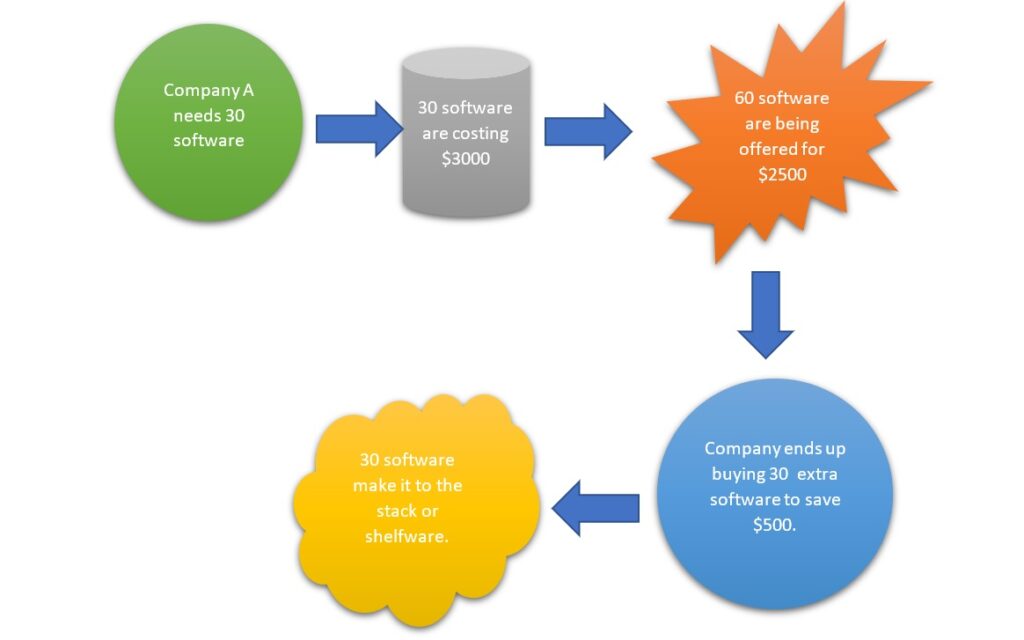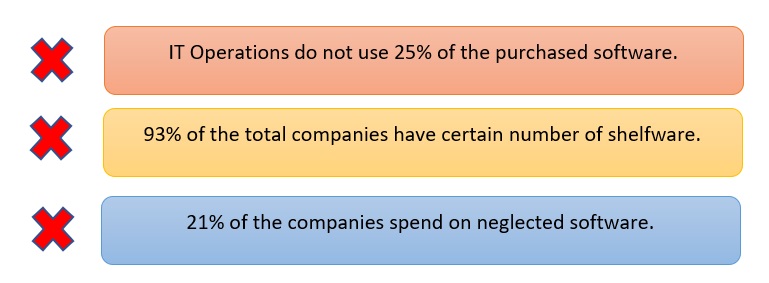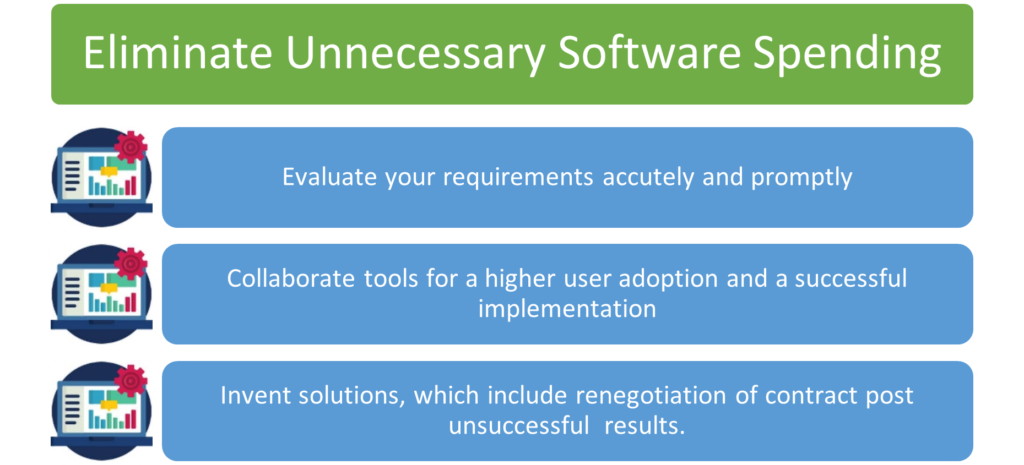What is Shelfware and Why is it Costing Your Business Money in 2021?

In the fast-paced race to be the best, organizations, whether start-ups or booming ones are purchasing the best possible tools in the contemporary business era. Technology upgrades are necessary in the booming business world, but at the same time, organizations end up spending on irrelevant tools to move operations and accelerate the overall growth. With many software options assuring success, organizations are spending a large amount of their money on buying these tools.
What is Shelfware?
As the name suggests, Shelfware is the set of software that is bought but is not used by an organization. Though this doesn’t mean that the company did not intend to use the software, instead, it probably gets ignored in the momentum of other vital procedures like training, recruitment etc. during a company start-up. Such software are bought as tools to accelerate an organization’s ascent towards success but are not brought to practical use. The figures show that shelfware alone amounts to an exorbitant $18 billion in the CRM market.
Why do the Software become Shelfware?
During the process of buying software for a company, the governing authorities have to take various factors into account. From the point of buying the software to the point of the bought software ending up in the stack, following are the reasons which could be held responsible for this needless expense:
- Discounts are everyone’s favorite. It is owing to the discounts being offered on a group of software that companies end up shelling money on buying licenses that may not be actually needed. Eg:

- Another reason is the ‘may be’ or ‘maybe not’ dilemma. The licenses are bought on the partial probability of ‘just in case’ it might be needed.
- Ignorance of certain SaaS tools bought by the organization is another factor responsible for the software turning into shelfware. You might be paying monthly subscriptions for the tools you aren’t even aware of among many tools.
How Can Shelfware be Avoided?

According to Gartner survey carried out in 2019,

A study suggests that in every company, each computer has about $259 worth of unused software in it. It is important to consider some comprehensive strategies to eliminate the shelfware for good.
- It is imperative to implement a proper plan when buying software for your firm. This includes keeping a check on tools with too many or too few pivotal features and having too many or lesser than needed licenses.
- Enforce the use of tracking software to gain insight into the performance of tools and how successful or unsuccessful certain tool is in simplifying the task of the employees. This would ensure the purchasing of only those software tools which are actually going to be used.
- It is important to set and acknowledge the business goals prior to purchasing tools and software to achieve those goals.
- Enlist your requirement and find the most suitable set of tools. It should be noted here that no single software can alone fulfill all the company needs.
- Once the business objectives are realized, the chaos of finding the perfect tools is eased. It is best to test various options and track the performance to land up at the perfect software.
- It is advisable to choose a software plan by keeping in mind the current as well as future employees.

How Has Shelfware Affected Contemporary Businesses?
In the age of a complete digital transformation, an average department in a company is standing on a series of software and subscriptions which probably form the neglected stack. Research has even suggested that an average company is spending nearly 37% of the software expense on shelfware instead. With new software tools being launched now and then, the year 2021 is seeing a rise in shelfware. Among all the departments, the marketing department has sprung out to be the guiltiest.
The rise of security insecurities in the small and big businesses has resulted in the major expenses of the companies in irrelevant tool purchases. Surveys have revealed that investing in the new security controls often end up being unutilized or rarely utilized.

The current industry is recovering from the 2020s Covid-19 chaos, in addition to winning the digital rat race, which has intensified the companies’ desperate need to invest more in multiple software tools. It is therefore advisable to strategize and invest in the tools which are most relevant to your business needs.